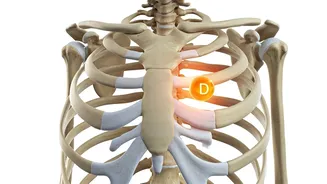Sunlight and Reality
Paradoxically, despite India's tropical climate and generous sunshine, a significant portion of the population struggles with vitamin D deficiency. This
condition is characterized by inadequate levels of vitamin D in the bloodstream, which is crucial for several bodily functions, most notably calcium absorption and bone health. The prevalence of this deficiency is alarmingly high, affecting individuals across all age groups, socioeconomic backgrounds, and geographic locations within the country. The discrepancy between abundant sunlight and widespread deficiency stems from a complex interplay of cultural practices, environmental conditions, and dietary choices that hinder the body's ability to synthesize and utilize vitamin D effectively. This section underscores the importance of recognizing and addressing the vitamin D crisis in India, promoting overall well-being.
Lifestyle and Choices
Various lifestyle factors contribute significantly to the vitamin D deficiency experienced by many Indians. Traditional clothing styles, which often involve full-body coverings, limit sun exposure, a primary source of vitamin D synthesis. Urbanization and changing work patterns also play a role. Many Indians now spend considerable time indoors, either at work or at home, reducing the opportunities for sun exposure. Furthermore, the widespread use of sunscreens, though important for protecting against harmful UV rays, also blocks the necessary UVB rays required for vitamin D production in the skin. The combined impact of these lifestyle choices results in a population that, despite living in a sunny country, struggles to generate sufficient vitamin D naturally. This highlights the need to reassess daily routines and behaviors to promote better vitamin D levels.
Dietary Deficiencies Uncovered
Dietary habits are another crucial aspect of the vitamin D deficiency issue in India. Vitamin D is naturally present in very few foods, with fatty fish, such as salmon and tuna, being among the best sources. However, these foods are not widely consumed throughout the Indian population due to regional preferences, cultural norms, and economic factors. The limited availability of vitamin D-rich foods means that many Indians do not obtain adequate amounts of the vitamin through their diet alone. While some foods are fortified with vitamin D, this practice isn't as widespread in India compared to other countries. Thus, a reliance on dietary sources to meet the body's vitamin D requirements can be challenging, making supplementation and other strategies necessary to combat the widespread deficiency within the population.
Awareness and Solutions
Addressing the vitamin D crisis in India requires a multifaceted approach. Increasing public awareness about the importance of vitamin D and the risks associated with its deficiency is a crucial first step. Education campaigns can highlight the benefits of adequate vitamin D levels for bone health, immune function, and overall well-being. Promoting lifestyle changes, such as encouraging individuals to spend more time outdoors, especially during times of peak sunlight, with appropriate sun protection, is also critical. Dietary adjustments, including the increased consumption of vitamin D-rich foods, can help. Supplementation, where dietary and lifestyle modifications are insufficient, can be considered under the guidance of healthcare professionals. By implementing such measures, India can work toward improving the vitamin D status of its population and mitigating the negative health consequences of this prevalent deficiency.






